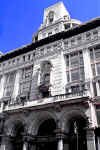 |
New York
Architecture Images-Chelsea Siegel-Cooper Dry Goods Store |
|
architect |
Delemos and Cordes |
|
location |
632 Sixth Ave. at W18th St. |
|
date |
1896 |
|
style |
American Beaux-Arts |
|
construction |
terracotta and brick |
|
type |
Shop |
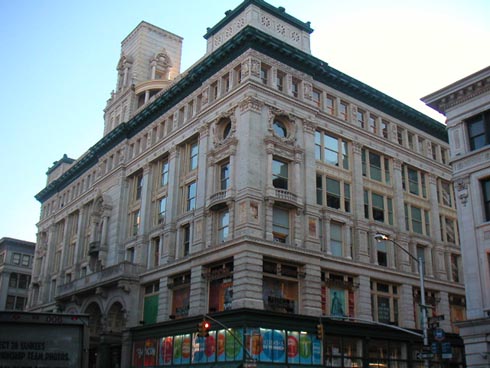 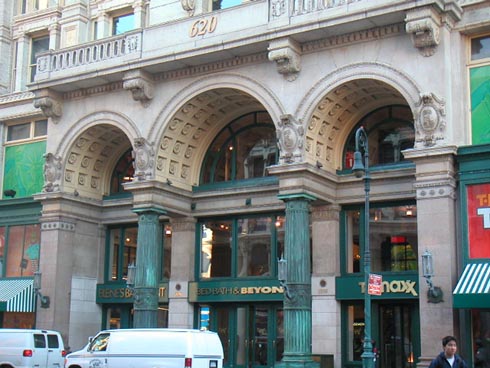 |
|
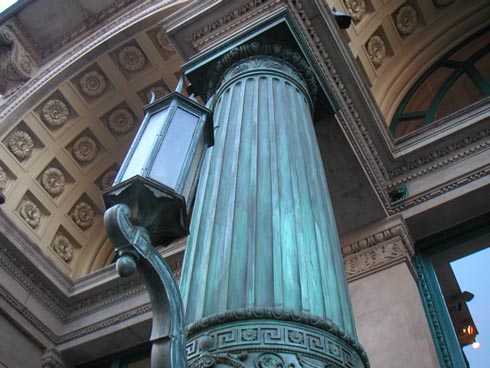 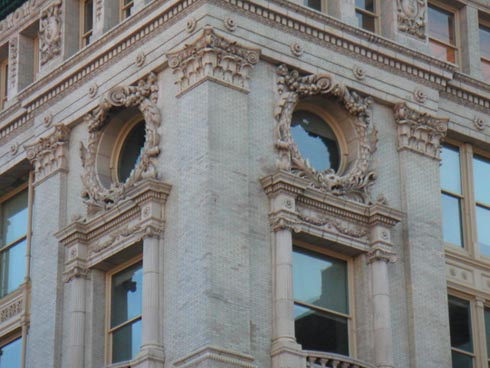 |
|
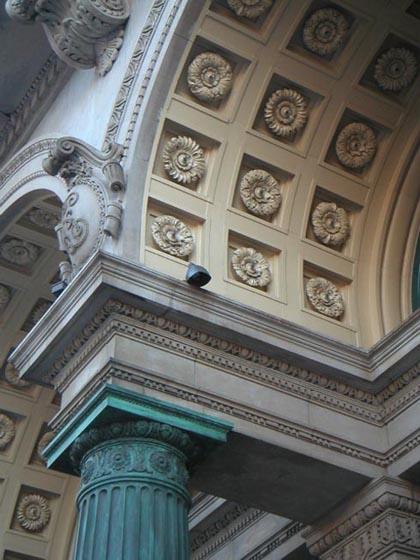 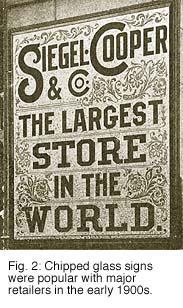 |
|
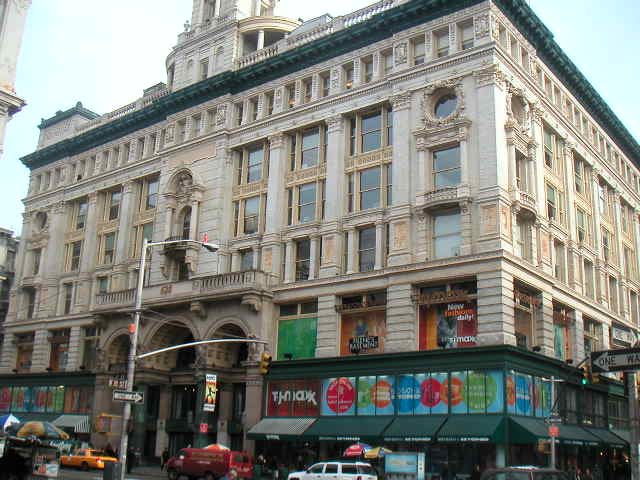 |
|
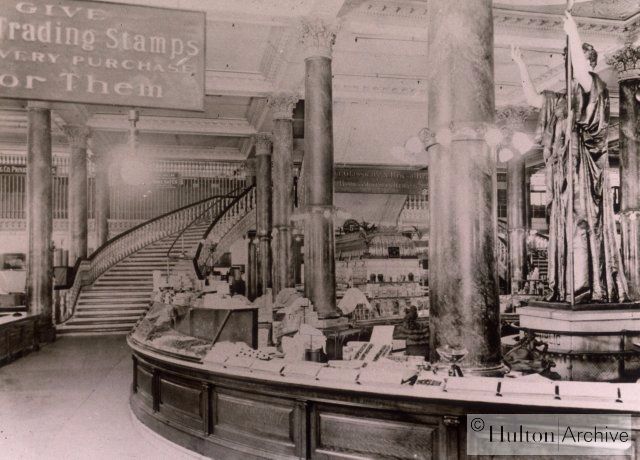 |
|
|
notes |
A late addition to Ladies' Mile, this eclectic
Beaux Arts store was built by a European trained firm for the
entrepreneurs Henry Siegel and Frank Cooper. Siegel came from Chicago,
where his attitudes towards marketing and retail had been shaped by his
encounter with the 1893 World's Columbian Exposition which inspired him
to use monumental architectural expression to attract customers to his
store. He commissioned an elaborate structure whose centerpiece was a
fountain marked by a replica of Daniel Chester French's white marble and
brass statue of the "Republic." This grand department store was the
first on Ladies' Mile to boast free samples and demonstrations, air
conditioning and an extensive range of merchandise under one roof.
Siegel used a variety of advertising techniques to promote his
department store.
Composed of a steel frame clad in many rich materials (marble, yellow brick, terra-cotta, bronze and copper) the block-long six-story building was constructed at a scale previously seen only at the exposition in Chicago, with architectural details that recall the grandeur of ancient Rome. Viewers riding in the El would be privy to a highly ornamented row of second floor shop windows, which surmount the broad shop windows of the ground floor and its monumental triple-arched entrance. Lewis Mumford noted, "If the vitality of an institution can be measured by its architecture, one can say that the department store was one of the most vital institutions of the epoch from 1880 to 1914." A parade of former department stores lines Sixth Avenue between 18th and 23rd Streets.The most opulent is Siegel Cooper. Henry Siegel cam from Chicago, where he had participated in the World's Fair of 1893. Seigel obviously asked DeLemos & Cordes, who designed the store, to put on it everything he had seen at the Fair - the whole architectural vocabulary of the American Beaux-Arts style. On September 12, 1896, the New York Times announced that the store would opent that night at 7:30, and thus "end a period of uncertainty for thousands of women who had a live interest in the scheme to equip New York City with a department store which should be the rival of any such establishment in the world. " The Times reported that 150,000 people had attended the opening of what they called "a shopping resort." The store was prepared for 190,000 visitors a day, and employed 8,000 clerks and 1,000 drivers and packers. In addition to the usual vast array of merchandise of department stores then and now, Siegel Cooper had a telegraph office, a long-distance telephone office, a foreign-money exchange, stock-trading services, a dentist, and an advertising agency. In the center of the lobby was a circular fountain where jets of water cascaded over concealed multicolored lights into a marble and brass statue of The Republic, a copy of one Daniel Chester French had designed for the Chicago Fair. "Meet me at the fountain" soon became the saying all over New York. Advertising played a major role in attracting customers, who were drawn from as far away as Connecticut and New jersey by the promise of such things as colored ostrich plumes at 19 cents.
|